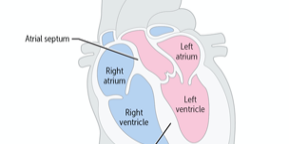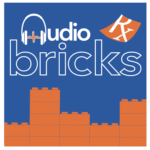Anatomy of the Heart


The heart is a muscular organ about the size of a fist. It pumps blood throughout the body, commanding a vast vascular network to deliver oxygen to every cell in the body. It beats nonstop for as long as we are alive, at an average of 80/min. So by the time we are 80 years old, our hearts will have beaten more than 3 billion times! The heart’s position in the center of our chest mimics the organ’s central position as the source of human love, spirituality, courage, and resistance. It is an amazingly beautiful organ; let’s learn more about its anatomy.
- Describe the pericardial sac and its layers, the pericardial space, and the pericardial fluid.
- Identify the three layers of the heart.
- Identify the four heart chambers, describe their topography, and explain their functions during systole and diastole.
- Describe the systemic and pulmonary vessels that enter and exit the heart, including their origin and destination, and the oxygenation status of the blood being transported.
- Explain the basic functional anatomy of the atrioventricular (AV) and semilunar valves, and explain how they operate during systole and diastole to create the four heart sounds (S1, S2, S3, and S4).
- Describe the role of papillary muscles and chordae tendineae.
You can also check out the original Anatomy of the Heart brick from our Cardiovascular collection, which is available for free.
Learn more about Rx Bricks by signing up for a free USMLE-Rx account: www.usmle-rx.com
You will get 5 days of full access to our Rx360+ program, including nearly 800 Rx Bricks. After the 5-day period, you will still be able to access over 150 free bricks, including the entire collections for General Microbiology and Cellular and Molecular Biology.
***
If you enjoyed this episode, we’d love for you to leave a review on Apple Podcasts. It helps with our visibility, and the more med students (or future med students) listen to the podcast, the more we can provide to the future physicians of the world.
Follow USMLE-Rx at:
Facebook: www.facebook.com/usmlerx
Blog: www.firstaidteam.com
Twitter: https://twitter.com/firstaidteam
Instagram: https://www.instagram.com/firstaidteam/
YouTube: www.youtube.com/USMLERX
Learn how you can access over 150 of our bricks for FREE: https://usmlerx.wpengine.com/free-bricks/
